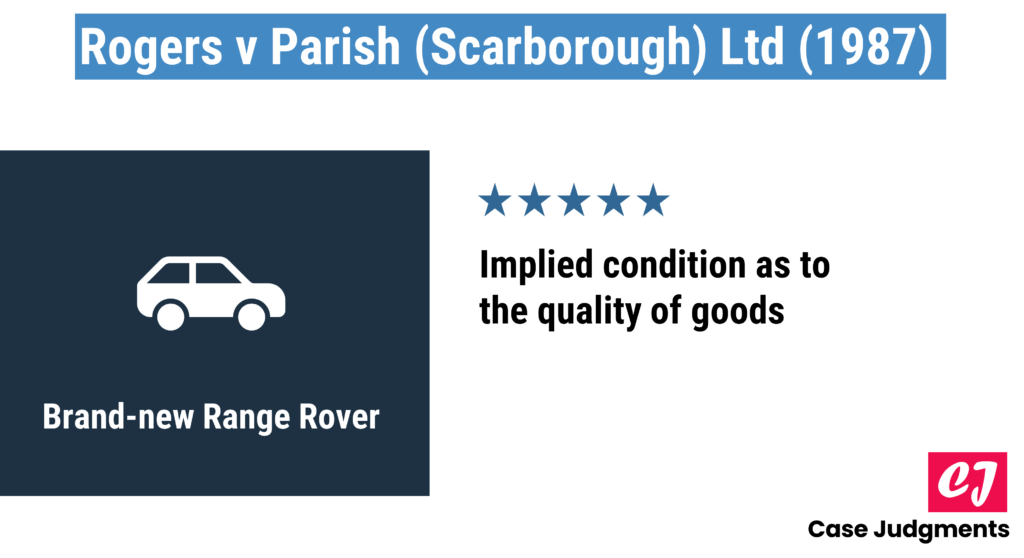
Harlingdon and Leinster Enterprises Ltd v Christopher Hull Fine Art Ltd (1990)
Case name & citation: Harlingdon and Leinster Enterprises Ltd v Christopher Hull Fine Art Ltd [1990] 1 All ER 737; [1991] 1 QB 564
Court and jurisdiction: Court of Appeal, England & Wales
Decided on: 15 December 1989
The bench of judges: Lord Justice Slade, Lord Justice NourseandLord Justice Stuart-Smith
Area of law: Implied condition in a sale by description
What is the case about?
This case discusses that there can’t be a sale by description if the buyer has not relied on the seller’s description.
Facts of the case (Harlingdon and Leinster Enterprises Ltd v Christopher Hull Fine Art Ltd)
The defendant sold the claimant an artwork that turned out to be a forgery. The defendant thought the painting was by Gabriele Munter (an artist of the German Expressionist school) because he had seen it as being attributed to Munter in an auction catalog.
While making the sale and during discussions with the claimant, he described the artwork as that of Munter’s, although making it clear that he was unfamiliar with Munter’s work and had very little knowledge of German Expressionist art. The claimant examined the painting and determined that it was genuine although he also did not have all the necessary expertise. He decided to purchase it. The purchase was made for £6,000.
In the defendant’s invoice, the painting was described as Munter’s. When the claimant realized the painting was fake, he filed a lawsuit under Section 13(1) to get his money back for the purchase.
The claimant additionally claimed that the painting was not of merchantable quality in accordance with Section 14 of the Sale of Goods Act of 1979.
Issue raised
Was there a sale by description?
As the painting was not an original work by Munter, could the claimant recover the purchase price?
Judgment of the Court in Harlingdon and Leinster Enterprises Ltd v Christopher Hull Fine Art Ltd
The Court of Appeal determined that the defendant had made it obvious that his attribution could not be relied upon, and that the claimant should have used his own knowledge and discretion. A contract will not be considered a sale by description just because the seller has made a statement regarding the goods. The purchaser must demonstrate that the description influenced their purchase decision. Because the claimant was unable to demonstrate this, his action was dismissed.
Further, as regards the contention relating to Section 14, the Court held that the misattribution did not impair the quality of the painting and thus, it could not be considered unmerchantable.
The relevant rule governing the case
As per Section 13(1), where there is a contract for the sale of goods by description, there is an implied condition that the goods will correspond with the description.
If the buyer has not seen the goods before purchasing them (for example, through a mail order catalog or the Internet), clearly there is a sale by description. But sometimes even if the buyer has seen the goods and possibly picked them personally, it may still be a sale by description if he has relied to some extent on a description from the seller.
Moreover, if the buyer has forgotten about the description by the time he actually buys the items, or if he does not believe what he has been told and verifies the specifics for himself, he may lose the protection of Section 13 since he has not relied on the description.
Conclusion
In the given case, the claimant inspected the painting himself (or through his team) before agreeing to purchase and the defendant made it clear that he lacked expertise in German Expressionist art. Therefore, the sale could not be treated as a sale by description. The claimant did not rely on the description.
List of references:
- https://www.hzu.edu.in/uploads/2020/10/business-law.pdf
- http://www.e-lawresources.co.uk/Harlington–and–Leinster-v-Christopher-Hull-Fine-Art.php
- https://www.lawteacher.net/free-law-essays/commercial-law/unascertained-goods-law-essays.php
You might also like:
More from sale of goods:

